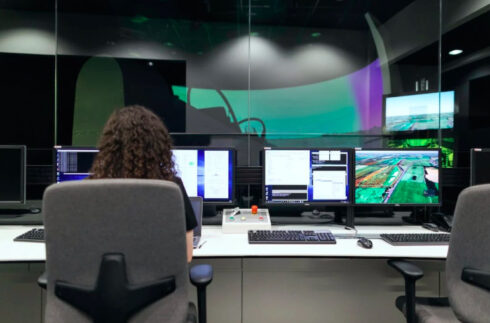
Through the years, interest in enterprise architecture has felt like somewhat of a roller coaster, with organizations recognizing its importance one minute and then deciding they don’t need it the next.
In a recent episode of ITOps Times’ podcast “Get With IT,” Paul Homan, a distinguished engineer at IBM and the CTO for the industrial sector clients in IBM Global Services, spoke more in depth about this. (This interview has been edited for clarity and length.)
ITOps Times: So one of the things that we’ve noticed, in covering this space for many, many years, is that there does seem to be a resurgence in people talking about enterprise architecture, and I’m curious from your perspective, why do you see that happening now? Why is the role taking on some new meaning?
Homan: Yeah, I definitely agree. There’s a little sort of slightly tongue in cheek analogy that I like to use that, to be honest, has happened a lot over the last 25 years for me in enterprise architecture, I call it a winter of enterprise architecture. It feels like we’ve been really important one minute and everyone wants to join everything up and then packages and cuts came along and everyone kind of went “we don’t need you so much.” So, it quieted down, and we kind of went through a number of those enterprise service buses and whatever else. These things have kind of meant we’ve gone through various sorts of seasonal winters where enterprise architecture has at one minute been critical, and then a bit later, it’s like, ‘No, it’s alright, we don’t need you and everything seems to be sorted by the technologies.’ This kind of unraveled later as things got more complicated.
The latest winter was a combination of agile development approaches and cloud capabilities and modern compute capabilities combined to mean that we will definitely be trying to get away from big design up front type stuff. The decision making was local and there’s a lot more of a push to do things in a more iterative way, learn as you go along, experiment, etc. Which has created a bigger challenge and a deeper winter than normal for enterprise architecture and the spring that we’re in now.
I’d definitely say the resurgence has been huge over the last couple of years and has come about for a number of reasons. One is a lot of the development, a lot of the things we’ve been able to do has created lots and lots of highly valuable, but individual solutions, and they don’t all join up. I wouldn’t go as far as some describe it as a “pilot purgatory,” but there’s an awful lot of individually developed solutions, and people go, “yeah, but actually, we want to do something that’s integrated here,” and we’ve got a lot of pieces of the puzzle here, and we need to do more of that. The second part is, especially through the uncertainty that we’ve had with COVID and global situations and everything else, people’s recognition of the value of what they can get from the insights of joined up data has gone up enormously. So that’s kind of upped the ante and the value of it. But to join it all up, you’ve got to understand how it relates and everything. So again, there’s that whole interoperability challenge.
And then, finally, things like climate change, or other big problems that are facing us. This comes back to sustainability, that you can’t do that on your own, you have to work with others. And so business ecosystems where multiple companies work together throughout their supply chain distribution networks, with other partners, perhaps with companies they’ve never worked with before, to address what they want to do requires even greater interoperability. I use that word quite deliberately, you might notice, but interoperability is the pursuit of enterprise architecture. That’s why we do it, we want it to all join up.
So I think those three pressures have reminded everybody that there’s a thing here that we’ve got some capabilities and competency that will help. So that’s why I think it is back in the discussion.
ITOps Times: Yeah, one of the things that we’ve been seeing in the reporting that we’ve been doing is this notion of delivering value. That seems to be an emphasis for many companies that we speak with. It seems to me that enterprise architecture does just the thing that companies need, or organizations need, to make sure that they are delivering value. Which is tying all the systems together, getting all the data out of it, seeing where problems may lie, where inefficiencies may exist, and things of that nature, to make sure that the eye is always on the prize, so to speak.
Homan: I completely agree, actually. One of the interesting things for me is if you go back to the Agile Manifesto, it says that if it doesn’t add value, don’t do it, or something to that effect, apologies to the original authors, but I know it’s along those lines. What’s interesting to me is, well, how does somebody know what is adding value to their business organization if it isn’t clear, right? There’s no harm in making sure that is universally communicated and universally expressed. I like to joke that the enterprise architecture role kind of decodes the business strategy to allow people to encode the technology solutions, right? So there’s a useful value that you can offer as a service that sort of ensures that people recognize what the business value or customer value is in something as well.
ITOps Times: So, let me ask you this, with organizations today putting a big emphasis on digital transformation, how does that impact sustainability or change the role that architects play in that?
Homan: So actually, I think it comes in two ways. One is you can almost look at sustainability as being one other set of non-functional requirements, but a strategic driver for your digital transformation. So, it is in the same way that digital transformation might have been focused around customer experience or speed to market or whatever, then sustainability becomes another outcome that you need to achieve, and you do the transformation to achieve it. That’s one element, and I think that’s the one that people are saying, “okay, what can we do that’s going to improve our footprint, improve our net zero emissions, etc, etc.” I think the other side though, is where we have a responsibility because, frankly, IT is adding to the problem, right? So unless we consciously worry about making our IT greener, then we can inadvertently add to the problem instead of taking away. Everything from the way we manage our data centers and optimize what’s being used all the way through to what kind of technologies we use and where we make sure they fit the purpose, will contribute to that whole footprint.
ITOps Times: That’s very interesting, what you were talking about, but I’m curious to know, what specific steps can an organization take to reduce their footprint? Even if they go to the cloud you still have these massive data centers where AWS or Microsoft or Google are running. So, how do organizations, from a technical standpoint, look to reduce their footprint and be less wasteful of resources and things like that?
Homan: So, I think the first thing is really to try and understand what the current footprint is, but also what to do about it. So I had the pleasure recently of going around one of our hypercloud centers, where the turbonomics is installed on it and you can sort of see what they are doing differently around actually managing down their energy use based on what’s being actually run at different times. You need to have a decent amount of insight and analytics to be able to work out what you can do about it, but by having that lens, that you want to try and minimize that footprint, you want to have that impact, you can start to do exactly that. The other side, for me, really comes down to things like ensuring you don’t add to the problem. I’ll give you an example: There’s a project that is a few years old, and the project did some research in 2019 that said, online video alone was producing something like 300 million tons of CO2 a year. That was back then, and we know that that’s gone up since then, and we also know things like video calls and the metaverse and AI algorithms, they are all highly interesting and worthy of exploration, but at the same time, they’re fueling that consumption and that use.So, everything we do new, consumes energy, or all software consumes energy, it’s not just about hardware anymore. I may be a bit old fashioned, but my view is that when I started in what I would have called programming many, many years ago, I used to spend maybe far too much time worrying about how to optimize the code I produced to be the minimum amount that you actually get to that so that it was efficient, and as it’s running it’s easier to debug. I think that kind of thinking is where I’m seeing people starting to be aware of what are the optimal toolchains, what are the things they want to do in terms of the outputs? Perhaps we’ve had the ability to become chatty with code, and generous with our data storage. Perhaps we need to be a bit more ruthless.








